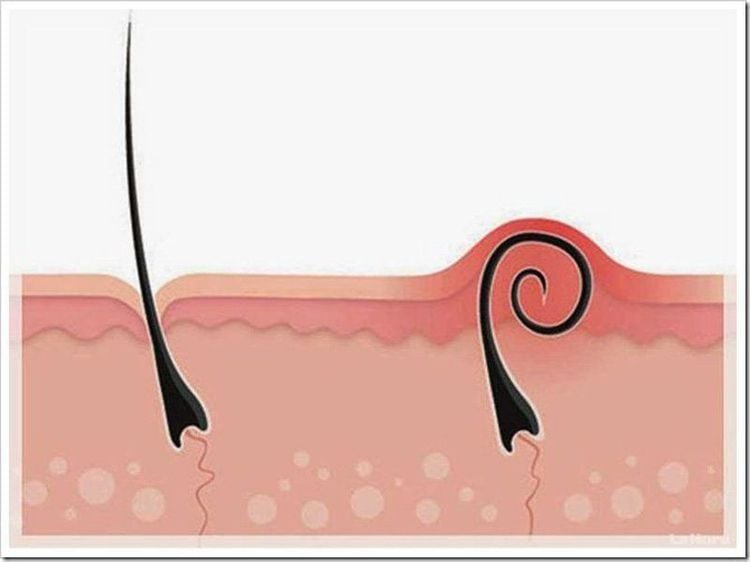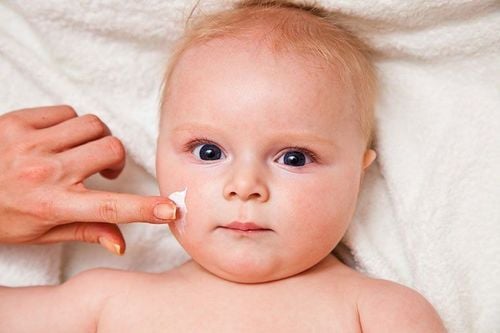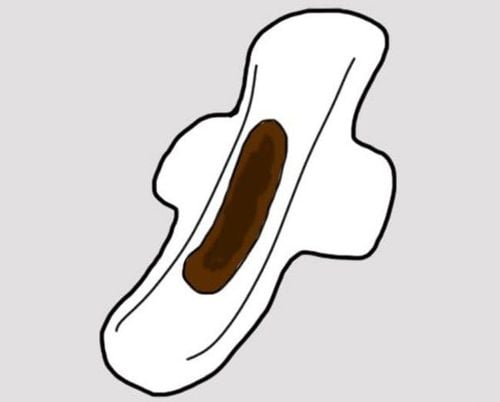This is an automatically translated article.
You don't have to remove or trim your pubic hair for any health reason, it's down to personal preference. There are many methods to choose from to remove pubic hair: it can be done at home or professionally done.1. How to remove pubic hair permanently at home
You can try at home to shape or shave your pubic hair, but keep in mind that none of these are permanent ways to get rid of pubic hair.Unless hair loss is caused by a pre-existing medical condition, hair will always grow back, even with some of the most aggressive medical treatments. Be prepared to make pubic hair removal a habit if you want to keep it.
1.1. Shaving Shaving is one of the easiest ways to remove hair because you only need a clean razor and some cream or gel. But it's much more likely that you'll cut yourself in the flesh and introduce bacteria into the area. You should use a razor on your pubic area to minimize the risk of this happening.
Here is a quick guide to shaving pubic hair safely:
Disinfect your razor. Wet pubic hair to make it easier to cut. You should opt for a natural cream, moisturizer or gel to lubricate the skin and reduce the risk of irritation or breakouts. When doing this, you should hold the skin tight and shave slowly and gently in the direction of hair growth. Rinse the razor after each swipe. 1.2. Plucking is more detailed and painful than shaving, but also requires less ingredients and can be done faster and with less mess if you just want a quick and efficient cut or shape.
Be gentle: Plucking too hard or suddenly can damage the skin or hair follicles, possibly leading to irritation or infection.
Sterilize your pair of specialized pubic hair removal tweezers before proceeding. Make sure you have good lighting for effective epilation You should hold the skin tight, then grab the end of the hair between the two prongs and gently pull the hair out in the direction of hair growth. 1.3. Trimming Trimming with scissors, a quick and beautiful way to shape the area. Trimming also has fewer potential complications, since the scissors don't usually touch your skin directly.
How to:
Sterilize your professional barber scissors before performing a haircut. Before doing the trimming you need to make sure your hair is dry so that the hairs do not bunch together. Trim the hair slowly and gently, strand-by-strand or in small clumps, until you're satisfied with the results. Store your shears in a clean and dry place to avoid infection when trimming hairs. 1.4. Use over-the-counter hair removal Depilatories, an over-the-counter chemical pubic hair remover that weakens a substance found in hair like keratin, causing them to fall out and be easily wiped away. Using an over-the-counter hair remover is quite simple - apply the cream to the area you want to remove hair, wait a few minutes, and then wipe off the cream and hair.
Topical is usually sold as a cream. They are safe, but they can be filled with ingredients that cause allergies or irritation to the skin at the waxing site. You should use them with caution or talk to your doctor before deciding to use these products.
1.5. Waxing Waxing can be painful, but it is very effective for long-term hair removal by tearing off large areas of hair at the root. Waxing can also relieve itching as the hair grows back.
Waxing is generally safe when done at home, but it's best to have it done by a professional. Waxing can also cause unbearable pain or cause irritation and infection if you have sensitive skin.
Here's how to wax yourself:
Use an over-the-counter hair removal wax along with a hair removal patch to do it. Wash and disinfect the area you plan to wax. Apply warm wax and a hair removal strip to the area to be waxed. Gently separate the strip from the skin.

Cạo lông một trong những cách dễ dàng nhất triệt lông mu vùng kín
2. Medical hair removal
Medical hair removal treatments tend to last longer because they are more likely to weaken or damage the hair follicles than simply cutting or removing the hair. So making the hair take longer to grow back.Some common and safe options you can try for medical hair removal - as long as you do it at a well-reviewed and licensed facility that specializes in these treatments.
2.1. Laser hair removal During laser hair removal, your doctor or dermatologist uses a laser device on your bare skin to transmit focused light down the hair follicles. The heat from the laser weakens or destroys the hair follicles, thus preventing hair from growing back.
Usually, when you wax you will need several treatments before the damaged hair follicles have had enough time to stop growing for a long time. However, not all laser devices are approved by the FDA to do this.
2.2. Electrolysis Electrolysis is similar to laser hair removal, but it uses an epilator device to deliver radiofrequency to the skin where it damages the hair follicles. This treatment will treat each hair follicle individually, unlike laser hair removal which typically treats multiple hair follicles in a designated area.
Similar to laser hair removal, electrolysis is not viewed as a completely permanent solution. But this method has been approved by the Food and Drug Administration (FDA) as safe to use for hair removal and can be cheaper than laser hair removal.
3. Precautions when removing pubic hair
Just like other hair removal methods, pubic hair removal can have some side effects or damage your skin if you're not careful. Side effects of bodyscaping include:Itching Ingrown hairs or possible roughness from shaving Rash and irritation, especially if you have sensitive skin when waxing Allergic reactions to other ingredients creams or gels Immune system reactions , such as hives , from laser or electrolytic removal Swelling or inflammation Cuts or scratches from the blade or wax strip affecting the skin at the site of the removal Hair Infections by bacteria that get into open cuts during hair removal Folliculitis High risk of certain sexually transmitted infections (STIs), such as molluscum contagiosum that can be The waxing process causes scratches that create favorable conditions for the transmission of infectious diseases. You should see a dermatologist if you notice these or any other unusual symptoms that don't start to heal within a few days.

Triệt lông mu vùng kín có thể khiến lông mọc ngược
4. Less pain at home hair removal
No at-home hair removal method is completely painless, but some methods of hair removal are more tolerable than others. And your pain tolerance also affects the choice of hair removal methods: Some people can wax without brushing their eyelashes, but others can literally scream at the feeling of hair being cut. unbent.You can get a quick reference of the relative pain you can expect from each method when performing hair removal:
Shaving: only feels a little painful if you cut or shave yourself Spit: moderately painful if you spit too hard Pruning: absolutely painless, unless you accidentally cut or poked your own skin. Asthenic: completely painless, unless the cream irritates your skin or causes an allergic reaction Any position from mild pain to very painful?
5. Which method is considered the best?
If you have sensitive skin, then you should avoid choosing hair removal methods such as: Waxing, epilation, waxing, even laser or electrolysis hair removal. Because these methods can be too strong and cause lasting damage. However, applying a careful trimming or shaving can be seen as the best options.If you have dark skin or pale skin, you can also see a podiatrist to use the right tools or treatments for your skin tone before applying hair removal. Using treatments that aren't right for your skin tone may not work or cause scarring or discoloration where the hair is removed, which isn't always treatable.
Please dial HOTLINE for more information or register for an appointment HERE. Download MyVinmec app to make appointments faster and to manage your bookings easily.
Reference source: healthline.com












